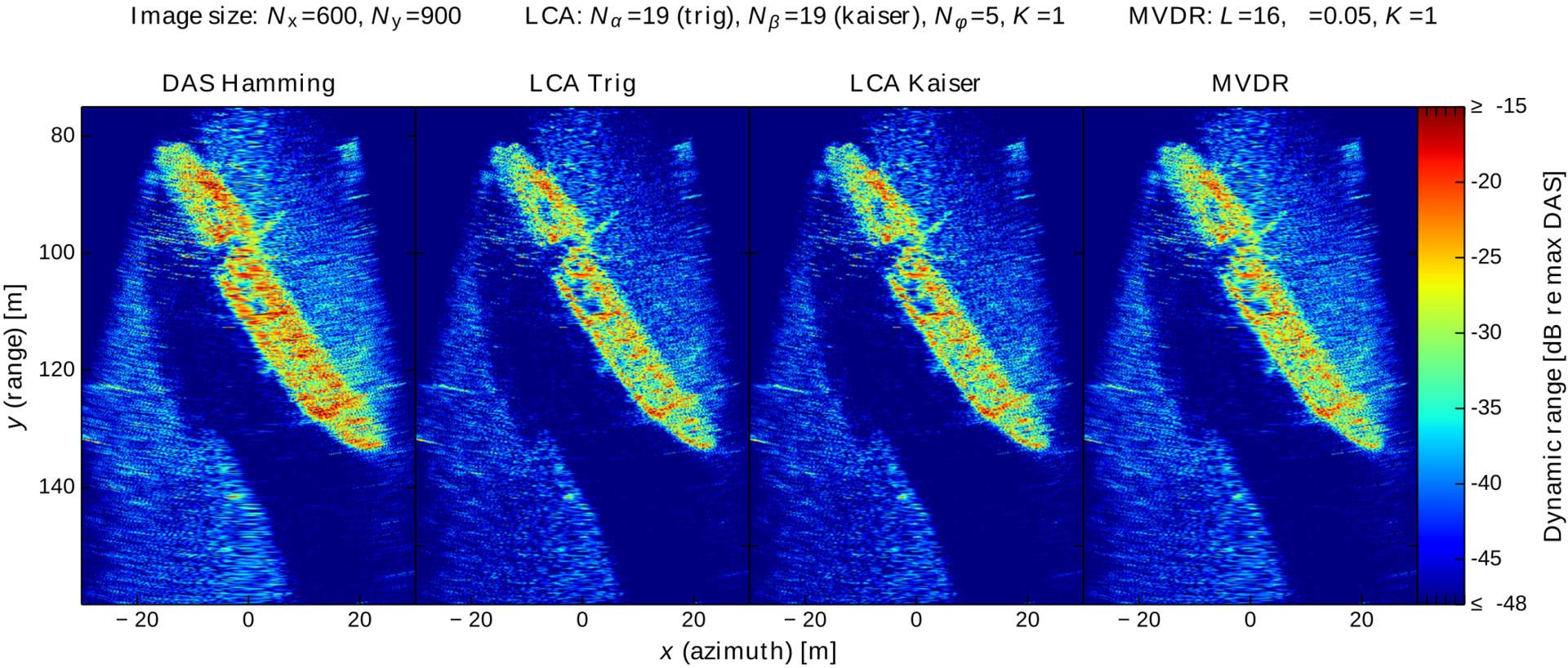This page provides supplementary material (2 movie files + source code) to the article Low Complexity Adaptive Sonar Imaging published in IEEE Journal of Oceanic Engineering, 2016, DOI: 10.1109/JOE.2016.2565038.

Media 1 - Typical MVDR window responses
| Description: | Typical spatial amplitude responses for the windows a robust MVDR implementation selects in shadow, highlight and speckle regions in an image. The shipwreck is of Holmengraa located outside Horten, Norway. |
|---|---|
| Size: | 28.6MB |
| File type: | mp4 (MPEG-4) |
Media 2 - Effect of adjust number of windows
| Description: | Mosaic of LCA images showcasing the effect of the number of windows it is allowed to choose from. |
|---|---|
| Size: | 28.6MB |
| File type: | mp4 (MPEG-4) |
Source Code
Python function for generating array tapers/windows for LCA: calcWindow3dSimple.py
Contact Info
Jo Inge Buskenes
University of Oslo
Oslo, Norway